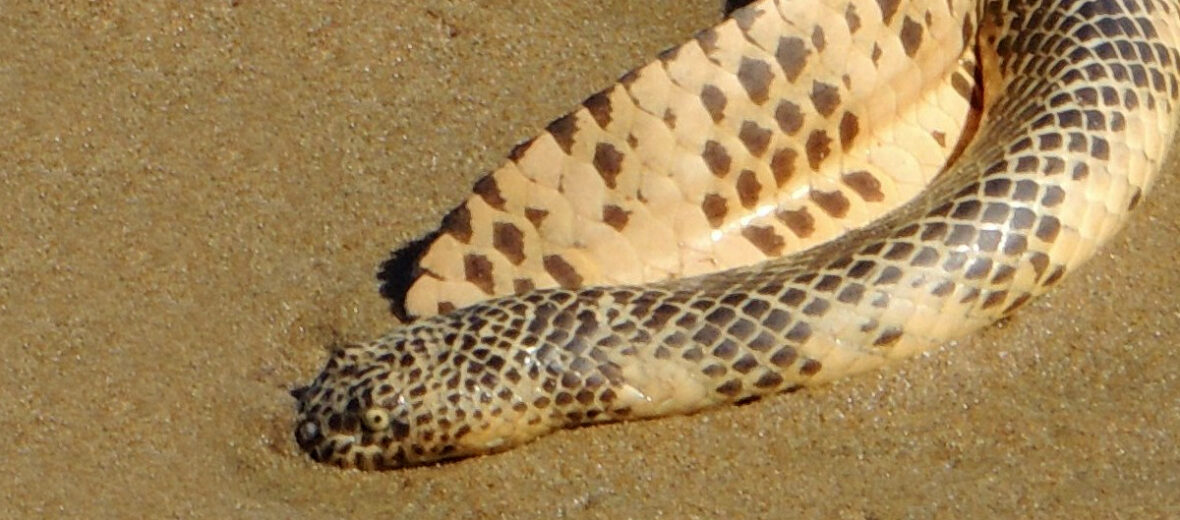
The Dubois’ sea snake is a species of highly venomous sea snake found in New Caledonia, Papua New Guinea, and the northern, eastern, and western coastal regions of Australia. Even though they face the threats of habitat destruction at the hands of gas and oil drilling; overfishing; and climate change, which causes temperature extremes, these snakes are listed as Least Concern by the IUCN.
First the Stats…
Scientific name: Aipysurus duboisii
Weight: Up to 2.86 lbs.
Length: Up to 4.86 feet
Lifespan: Up to 15 years
Now on to the Facts!
1.) Their populations are unfortunately decreasing.
2.) They also go by the name reef shallows sea snake.
3.) These snakes can dive to depths of up to 262 feet.
4.) Various fish and moray eels are on the menu.
5.) The fangs of these snakes measure up to just .07 inch long.
But wait, there’s more on the Dubois’ sea snake!
6.) The venom yield is up to 1.52 ounces! The average venom yield of venomous snakes is just .008 ounce.
7.) Dubois’ snakes are crepuscular (active at dawn and dusk).
Did you know…?
Their venom is classified as a neurotoxin that can cause flaccid paralysis (severe muscle tone loss), droopy eyelids, difficulty swallowing, headache, sweating, vomiting, body aches, muscle stiffness, hyperkalemic cardiotoxicity, acute kidney failure, muscle necrosis, myoglobinuria, and elevated creatinine levels.
8.) The specific name, duboisii, is devoted to Belgian naturalist Charles Frédéric Dubois.
9.) Dubois’ sea snakes are viviparous (give live birth, rather than lay eggs).
10.) These critters are deemed the most venomous sea snake in the world and the 3rd most venomous snake, after the inland Taipan and the eastern brown snake. Both of which are also from Australia.
But wait, there’s still more on the Dubois’ sea snake!
11.) Females can birth 9 or more snakelets.
12.) Snakelets are born precocial (self sufficient) and fully venomous.
Now a Short Dubois’ Sea Snake Video!
This video talks about sea snakes in general.
Be sure to share & comment below! Also, check out the Critter Science YouTube channel. Videos added regularly!
Want to suggest a critter for me to write about? Let me know here.
Some source material acquired from: Wikipedia & IUCN
Photo credit: iNaturalist



